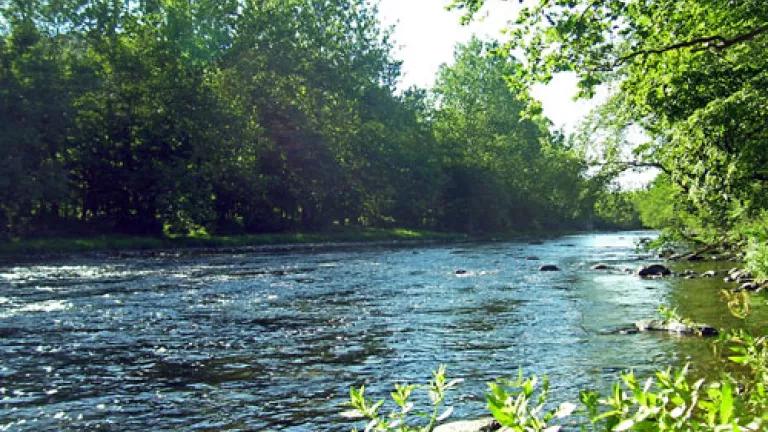
The New York City Council held a hearing last week about Gov. Paterson’s surprise bid, on behalf of the Stockbridge-Munsee Tribe of Wisconsin, to build a Las Vegas-style casino on the banks of the Neversink River – one of the most important rivers and freshwater ecosystems in North America.
You may be asking why New York City’s law-making body would concern itself with a proposed development site in the Catskills, roughly 90 miles away? The truth is, this mega-project – or any others like it – could put our city’s clean drinking water and local food supply at risk.
I had the opportunity to testify at the hearing, called by Environmental Committee Chair Jim Gennaro – who over the last year has forcefully spoken out against proposed fracking for natural gas in the New York City watershed.
Before outlining some of the concerns we voiced at this hearing, it is important to underscore that NRDC strongly support the rights of the Stockbridge-Munsee Tribe and other Indian tribes to self-governance and the pursuit of economic self-determination. And NRDC has a long history of working side-by-side with Indian tribes around the country.
Thus, NRDC’s concern is simply about the appropriateness of building a mega-complex on a fragile ecological gem.
(The Neversink River; photo by Daniel Case)
The complex would be built on 333-acres of forested buffer land along a one-mile stretch of the Neversink River. In the Tribe’s most recent proposal unveiled a few years ago, they sought to build a complex that would include a 580,000-square-foot casino, a 750-room hotel, and 9,500 parking spaces at this Neversink River site.
As I testified at the hearing, a casino of this size would have enormous implications for the river itself and two important natural resources situated in the Catskills – New York City’s “watershed” and “foodshed.”
- Risks to the river: The most obvious impact would be to the river and surrounding ecosystem. Construction could lead to a rise in the river’s temperature – which could be a death sentence to trout and globally rare aquatic species living in what’s known as the birthplace of American fly-fishing. And chopping down trees to build the casino and parking lots could threaten the bald eagle, osprey, and other wildlife living there. Not surprisingly, the last time this project was proposed, the U.S. EPA wrote that filling in the wetlands would have “unavoidable adverse impacts on the aquatic ecosystem” of the river.
- Risks to the water supply: The Catskills “watershed” supplies on average 90 percent of the water supply for 9 million New Yorkers each day and is one of the last remaining unfiltered drinking water supplies in the country. Induced growth and traffic from even one casino could overload roads and affect water quality in the nearby Rondout and Neversink Reservoirs, which are roughly 10-12 miles away from the site. This is not just NRDC’s conclusion. One of most respected traffic consultants in the Northeast concluded in 2006 that, “the Catskill region, with its existing infrastructure, is unsuitable for the development of the proposed casinos.”
- Risks to local food supply: A lesser-known fact is that the Catskills region is also a core part of New York City’s “foodshed” – that is, the area in and around the city that supplies us with our much-in-demand “local food.” Our local foodshed, like our watershed, is a critical economic and environmental resource that must be fiercely protected. Indeed, New York City Speaker Christine Quinn noted in her recently released “Foodworks” plan that we need to launch a new full-blown strategy to strengthen our regional food supply and undertake “a conscious effort to support our regional farmers.” And this push can’t start soon enough. An average of 70 acres of farmland are lost in New York every day and, over the past 50 years, over a million acres of local farmland have been buried under cement and asphalt. Why build massive new development projects in the Catskills that would further threaten the hundreds of farmers who provide food to our region?
One final point: at the hearing, I called on the New York City Council to press state and federal officials to undertake a full and legally required environmental review process before any decisions are made. Right now, it appears that the Tribe and some of its backers want to rely instead on draft environmental assessments that were undertaken more than four years ago. Not only are these reviews outdated, but they also are severely flawed. Among other things, they failed to adequately assess the impacts of the casino on the river and properly analyze the traffic impacts of building at least three casinos in the region (which is the current plan).
In sum, this controversy is not about gambling or casinos. It is about ensuring that the city’s upstate watershed, the overall Catskills ecosystem, and our local food supply is not compromised. In its current form and in this ecologically sensitive location, the proposed casino project simply poses too many unacceptable risks.
